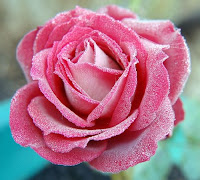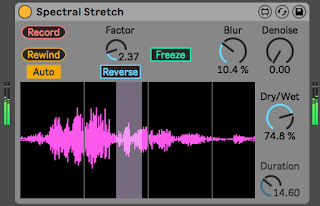Zygomatic - Laughter Music
Zygomatic is a composition for voice and live electronics. It is part of the Arc-en-ciel cycle. The premiere took place on June 17th, 2005, in Le Palot, Montbéliard, France. The wonderful singer was Isabelle Jost, while I was performing the live electronics. Listen to the concert recording here (click the play button) or there: Zygomatic on last.fm (download is also possible).
A personalized sonorous score
During the first part of the recording, you will hear only the voice, no electronic music. This is normal! The live electronics generate in real time a personalized sonorous score. The score is sonorous: the singer hears the score (a kind of electronic music) thanks to a wireless in-ear monitor. The score is personalized: it is generated live by transformations of the first 10 seconds of the voice part.
But what does it mean, to interpret a sonorous score? Here is the text I wrote in the score, in 2005: "Interpréter une partition sonore, c’est orienter son écoute dans l’espace de la partition et chanter en imitation. C’est choisir un point d’écoute et le présenter sous forme chantée au public." A literal translation goes something like: "To interpret a sonorous score is to orient one's listening in the score space and to sing in imitation. It is to choose a listening point and to present it to the public in a sung form."

The second part is a presentation of the piece itself (in French in this version).
In the third part, you get to hear both the singer and the sonorous score itself. It is generated in real time using Max/MSP and Jitter. During the premiere performance, the Max patch was also projected at this point, showing different processes and sonograms. On the right, see a preliminary study for the live electronics, from October 2004.
Music and Laughter
One of the famous laughters, among those recorded in a musical context, is featured on The Okeh Laughing Record. Click on the link to listen to the recording on The Internet Archive and read comments & information. It was recorded in 1923, far before another famous example: I Love to Laugh.



Comments
Post a Comment